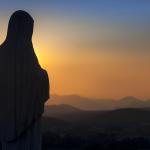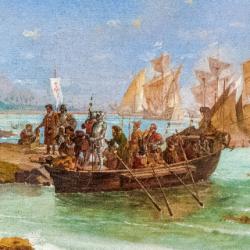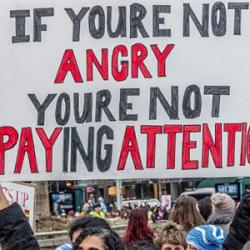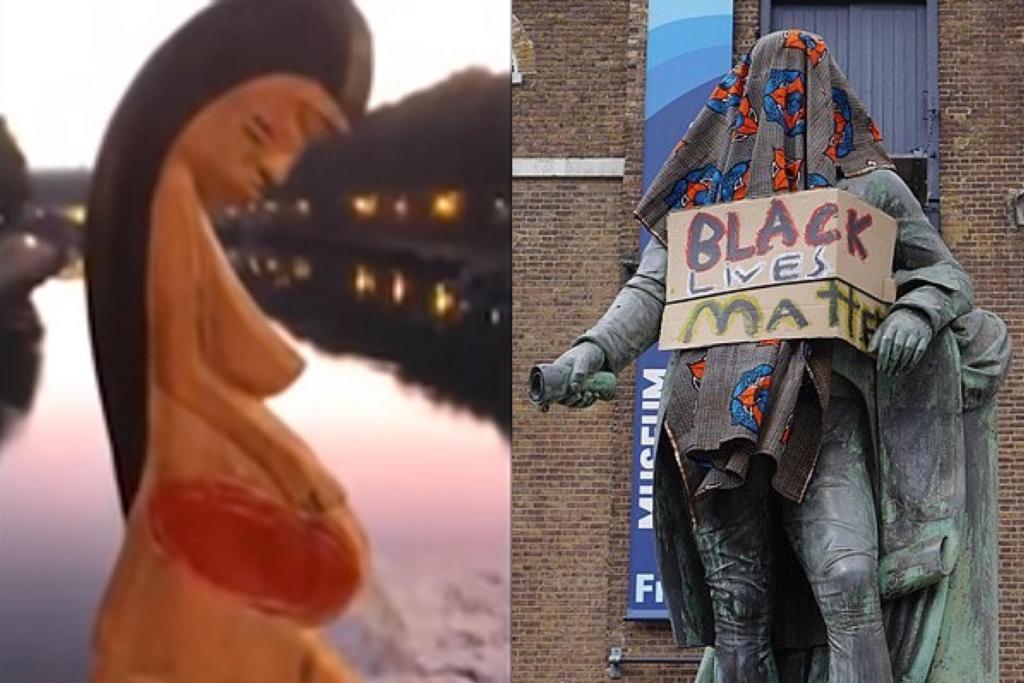
Earlier this year, the Catholic community had endured the excitement of the Amazonian Synod which was overshadowed by controversy. An icon was introduced by a group from the Amazon region that appeared to be a woman bearing life in her womb. My first impression was it appeared to be an indigenous depiction of the Virgin Mary. Though due to the widespread confusion from various media sources and voices on social media, there was no clear answer as for who the icon represented. One Vatican communications official claimed that it wasn’t the Virgin Mary, but simply a representation of a woman bearing life in her womb. Some referred to the icon as ‘Pachamama‘ which typically refers to the ancient Incan goddess equivalent to Mother Earth, but some had noted the name was interchangeable with identifying the Mother of our Lord. This confusion motivated a young man to sneak into a chapel in Rome where the icons had been displayed to remove and toss them into the Tiber river — in hopes to send out a message to the Church that idolatry would not be tolerated.
Though the icons were later recovered from the river, it left the Catholic world wrangling among themselves over what constitutes as idolatry and at what point iconoclasm becomes appropriate. Some people would justify what had happened by citing passages in Scripture such as when the bronze snake God had commanded Moses to use to help save his people from death (Numbers 21:6-9) was destroyed after the Hebrews began to worship it (2 Kings 18:4), or the Maccabean Revolt where the Jewish armies destroyed their enemy’s altars where unclean sacrifices were made to pagan gods (1 Maccabees 4:36-59). Even St. Boniface was known to hack down an oak tree that was dedicated to the Norse god Thor as a place of ritualistic human sacrifice. These were among the examples that some Catholics used to justify the removal of the ‘Pachamama’ icon.
Fast forward to the summer of an already chaotic 2020, racial tensions in North America has reached a new high in the wake of the murders of George Floyd and Ahmaud Arbery which propelled the Black Lives Matter movement to the forefront of current events. The riots that have sparked all over the United States have also resulted in statues and monuments of historical figures (who may have played a role in the establishment of white supremacy) being taken down and destroyed. While I’m of the opinion that raising awareness of systemic racism is a giant step forward in reconciliation and I don’t have a problem with removing a monument of someone who was complicit in a grave evil, the problem with every movement is that you will always have people who will take advantage of an opportunity to wreak havoc in places that don’t deserve it. In which case, I am referring to the destruction of statues, monuments and artistic depictions that have little or nothing to do with the issues at hand.
Iconoclasm (the deliberate destruction of images) has existed almost as long as mankind walked the earth and seems to come in a variety of forms. When they took place, there were usually deep and profound reasons for these planned destructions — and the ones who instigate it usually believe they are in the right to do so. Images and statues were destroyed simply to erase the memory of their rivals since they represented an evil they believed to be defeated. This sort of describes how the Protestants sects viewed the institution of the Roman Catholic Church in the wake of the Reformation, as some dissenters initiated the destruction of Catholic statues in several parts of Europe. What motivated them was a desire to remove any images that seemingly interferes with worship of God alone.
But like any other movement, where is the line drawn before the end goal is reached?
It is worth noting that the use of icons and images have been used as a tool of evangelism for centuries, especially during the middle ages and in the days of the Early Church. In places where missionaries encountered a language barrier or people who were unable to read, images served as a means of communicating stories from the Bible. With this in mind, every culture depicts Jesus, Mary and other biblical figures in a way that resonates with them. Often that comes with depicting them as the same race as them. After all, Jesus is someone that could identify with all humans of all races.
The incident in Rome and the widespread removal of statues in the U.S. is reminiscent of what happened during the Protestant Reformation. In the case of the Amazonian Synod, whether the icons represented our Blessed Mother or Pachamama, there never should have been any confusion about what they represented from the beginning. Because of this, many Catholics were concerned that the way the icons were presented and revered was going too far. What’s worse is the amount of attention the icons received seemed to drown out the real point of the Synod — which was to recognize the inherent value of the Amazonian region, the importance it has on the world’s ecosystem and the effects of systemic racism and capitalistic exploitation on the lands resources and the local residents.
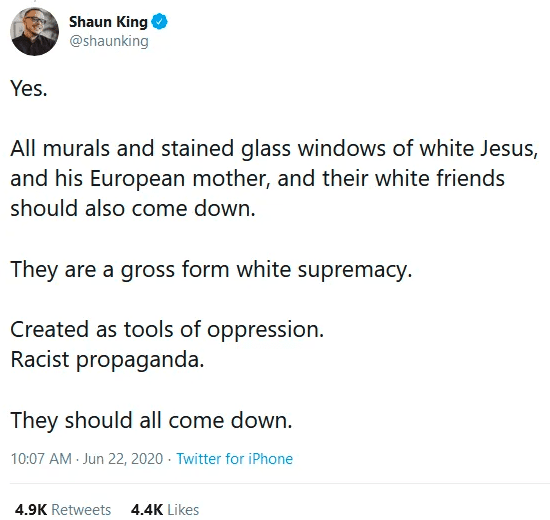
What I find most disturbing is the fact that most people seem to only care about the destruction of personal property if it affects them directly. Some Catholics might have briefly rejoiced when the icons were tossed in the river, but nobody seemed to consider how the indigenous Catholics would interpret that message — that only a Eurocentric depiction of biblical figures is acceptable. This is what frustrates me about our current culture — because our society has embraced hyper-individualism, political correctness and moral relativism to such a degree that there seems to be no clarity in what defines idolatry and racism. When people can’t decipher what is merely a cultural expression of a religious icon, anything that appears different can appear threatening and therefore an idol to be taken down.
And now, as some self-described activists and militant rioters are targeting churches whose statues, icons, stained-glass windows and monuments seemingly depict a white-skinned Jesus and Mary, one can only wonder that the Muslims might have been on to something in prohibiting any depiction of their prophet Muhammad. How does one respond to iconoclasm coming from a secularist when some of our own fellow Catholics have already taken the iconoclastic plunge? Perhaps this could be the result of a deep-seated resentment towards white supremacy that has festered for far too long….


